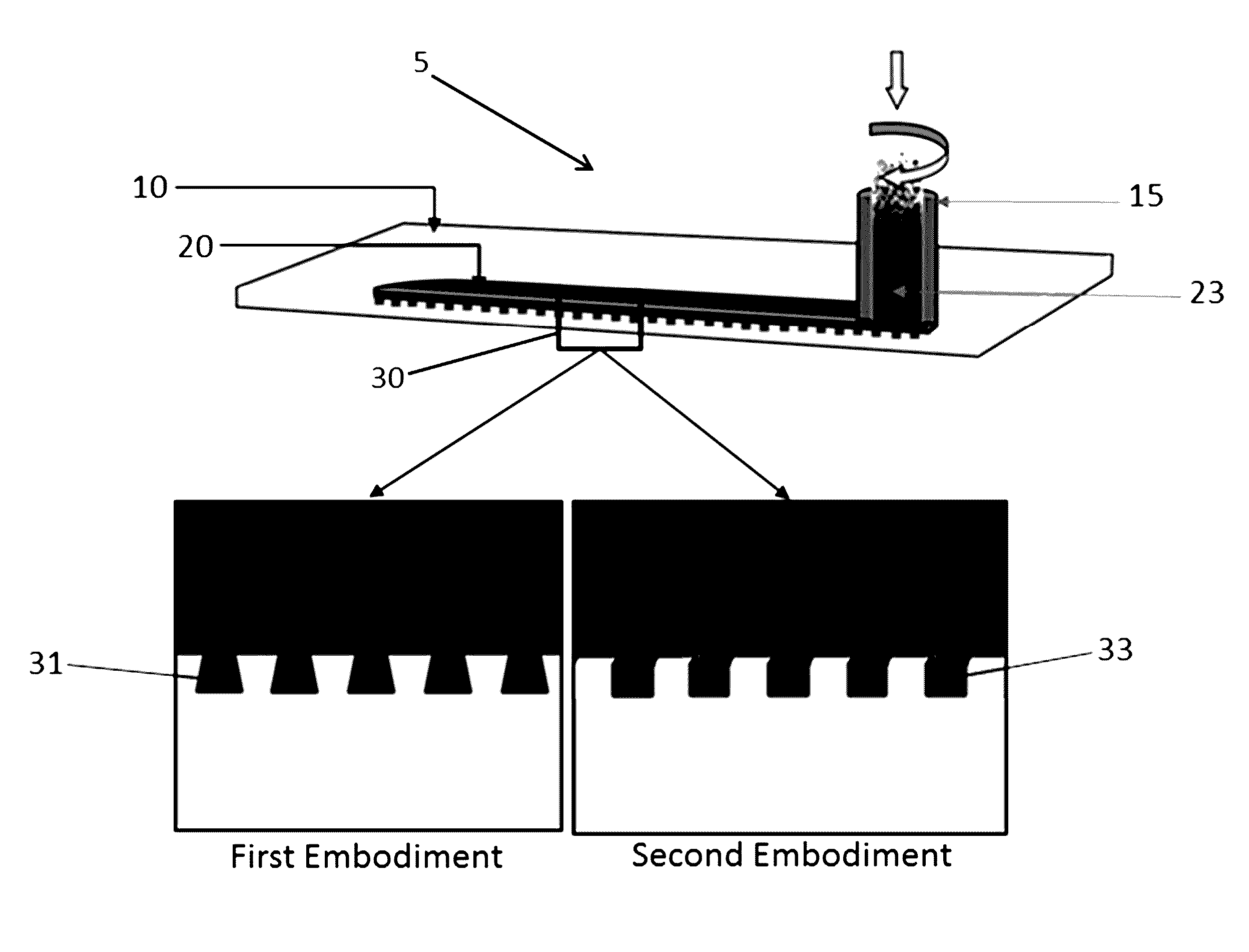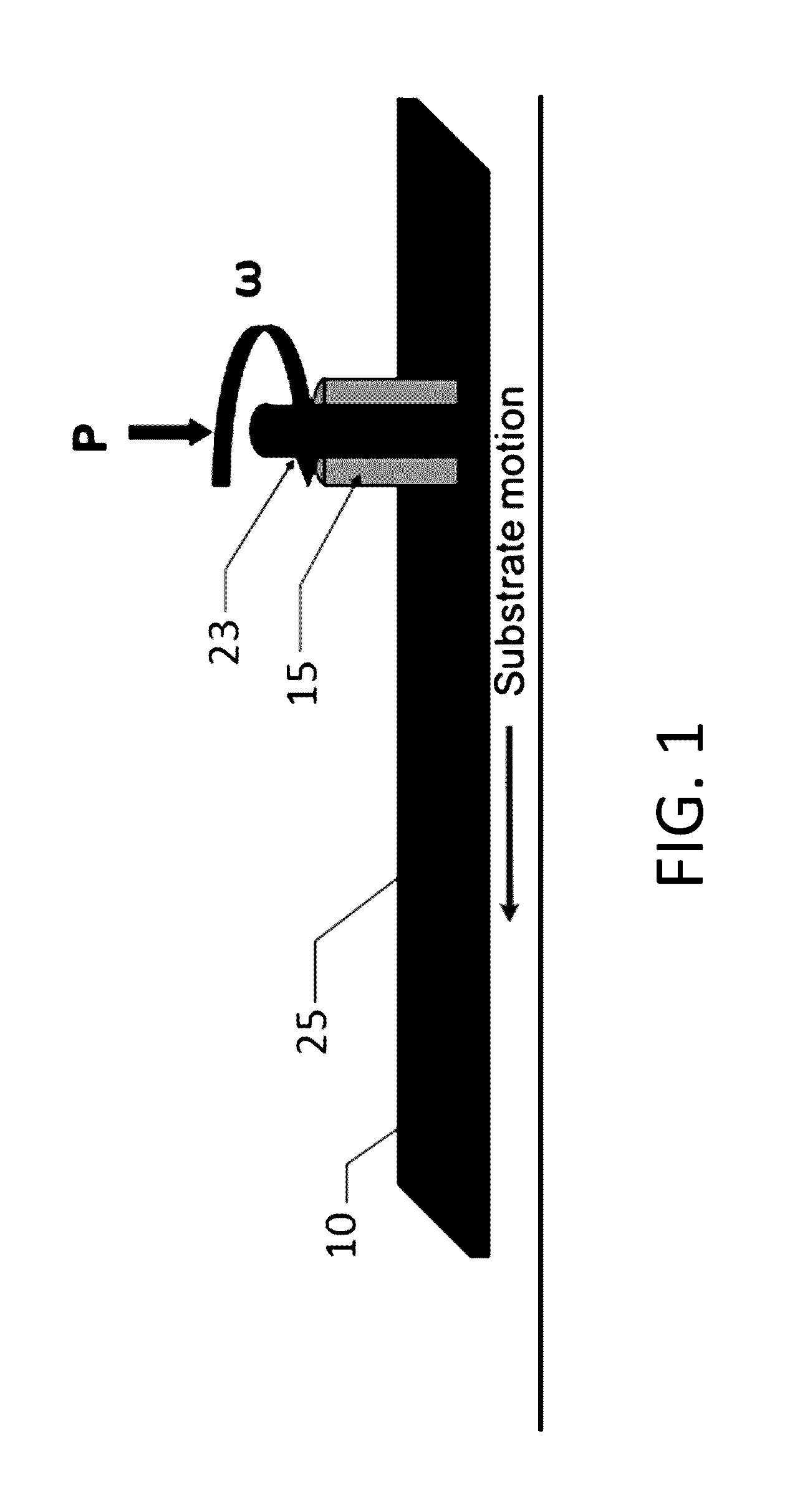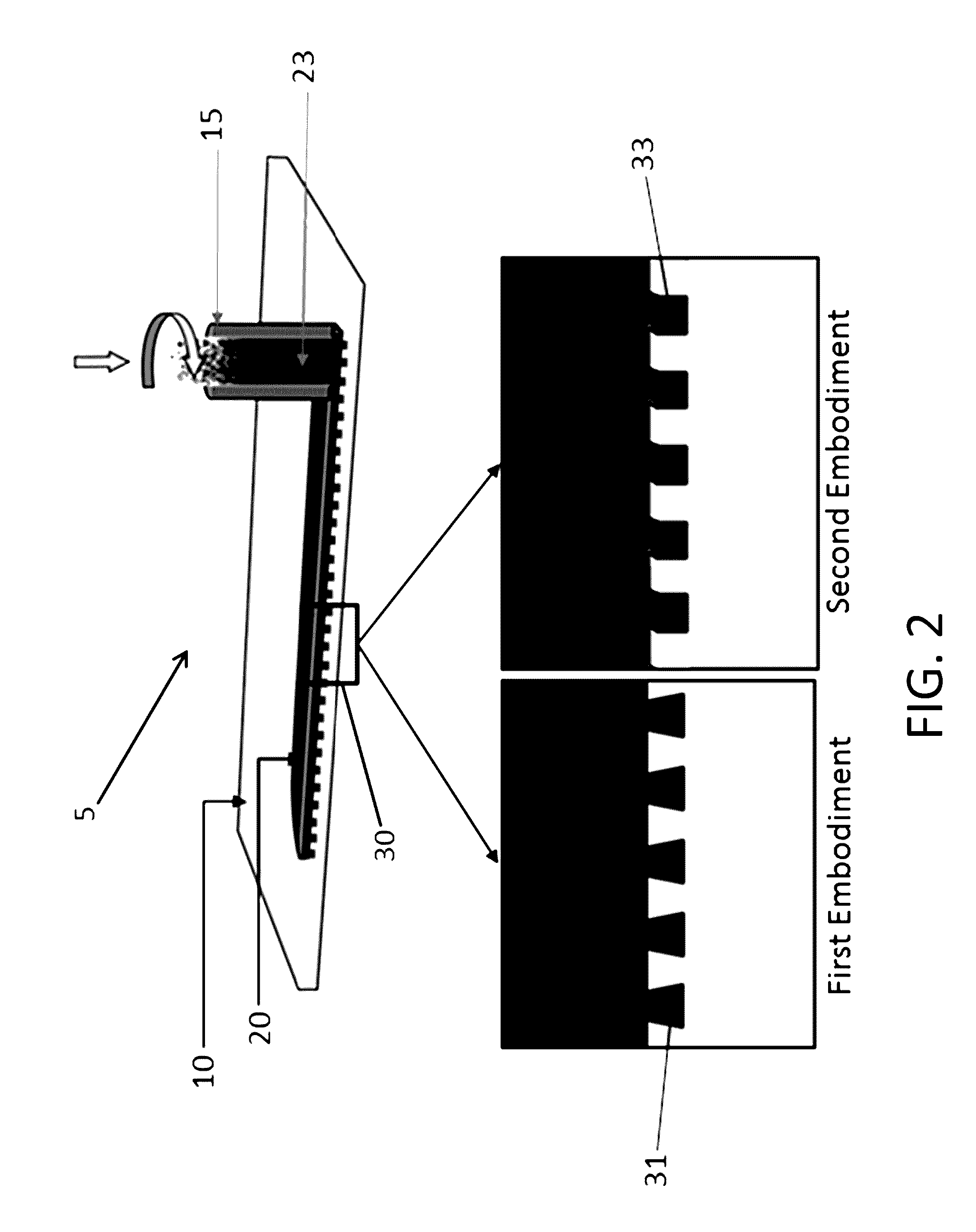In-situ interlocking of metals using additive friction stir processing
a technology of additive friction stir and interlocking metals, which is applied in the direction of manufacturing tools, non-electric welding apparatus, transportation and packaging, etc., can solve the problems of large portion of the substrate to soften, the inability of conventional techniques to bond and the inability to achieve the effect of dissimilar materials such as steel and aluminum
- Summary
- Abstract
- Description
- Claims
- Application Information
AI Technical Summary
Benefits of technology
Problems solved by technology
Method used
Image
Examples
example
[0064]FIG. 4 is a macrograph image showing a cross section of an article of manufacture comprising two different metals (molybdenum and copper) in an interlocking configuration prepared according to an embodiment of the invention. The substrate comprises molybdenum and multiple grooves in the surface of the substrate. The cross-sectional shape of the grooves in the substrate is rectangular. Copper was added to the surface of the substrate using an additive friction stir tool. At least one side of the grooves was deformed during the additive friction stir process to provide for a mechanical interlocking configuration between the molybdenum substrate and the copper coating. In the area of the joint between the molybdenum and copper, each of the copper and molybdenum have two-dimensional projections into this area as shown. Some of the two-dimensional projections are of convex polygon shape and some are of concave polygon shape. Other combinations of materials can also be used, includi...
PUM
| Property | Measurement | Unit |
|---|---|---|
| width | aaaaa | aaaaa |
| width | aaaaa | aaaaa |
| depth | aaaaa | aaaaa |
Abstract
Description
Claims
Application Information
 Login to View More
Login to View More - R&D
- Intellectual Property
- Life Sciences
- Materials
- Tech Scout
- Unparalleled Data Quality
- Higher Quality Content
- 60% Fewer Hallucinations
Browse by: Latest US Patents, China's latest patents, Technical Efficacy Thesaurus, Application Domain, Technology Topic, Popular Technical Reports.
© 2025 PatSnap. All rights reserved.Legal|Privacy policy|Modern Slavery Act Transparency Statement|Sitemap|About US| Contact US: help@patsnap.com



